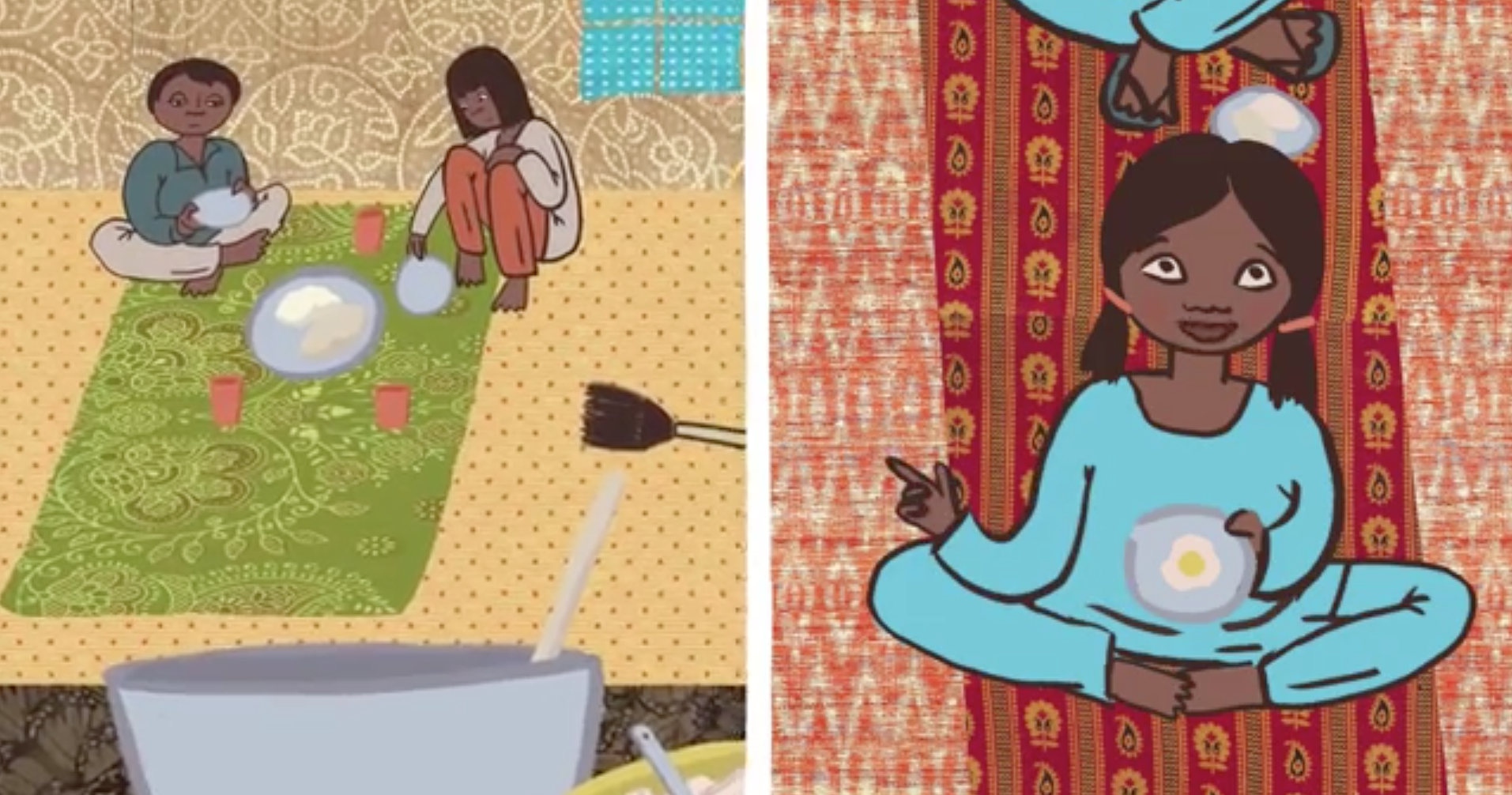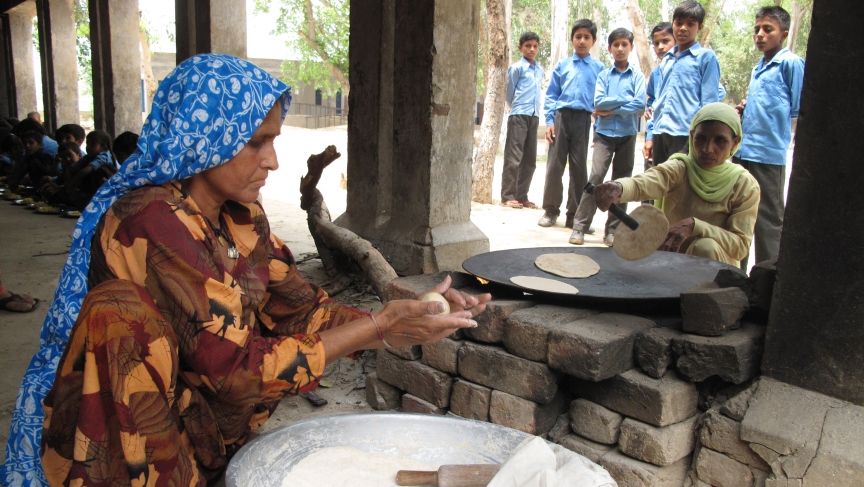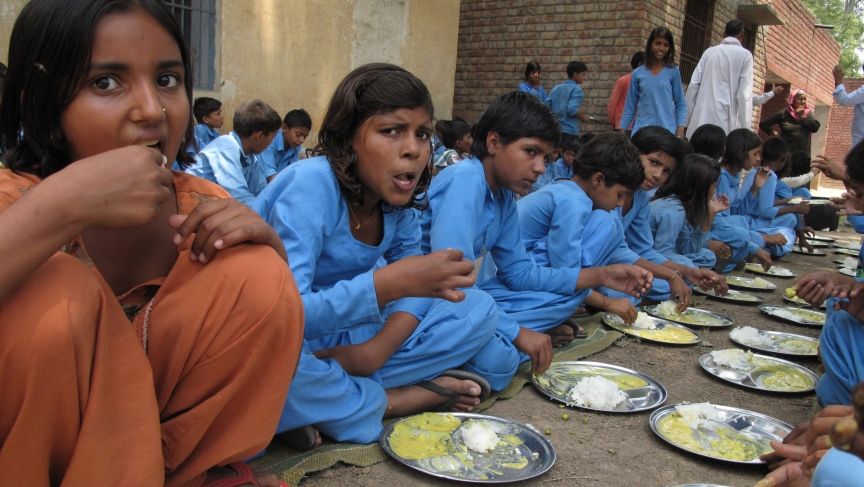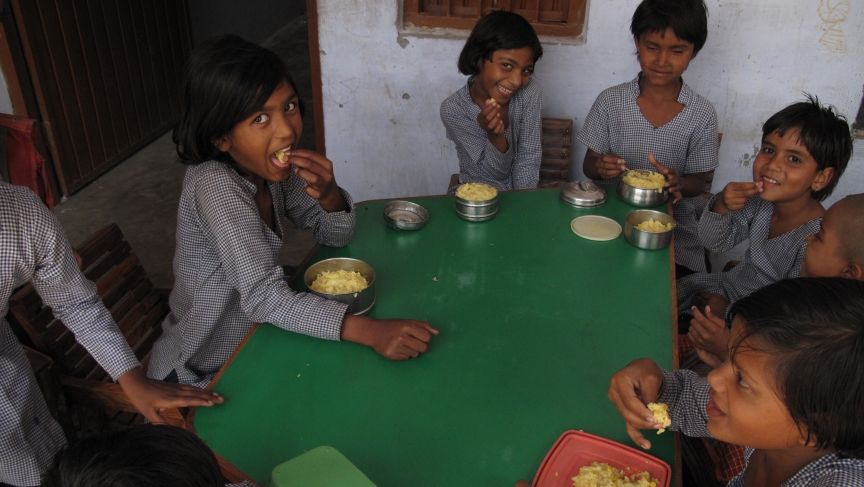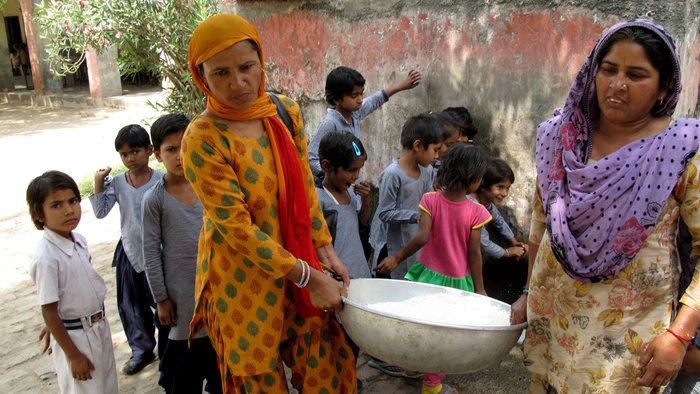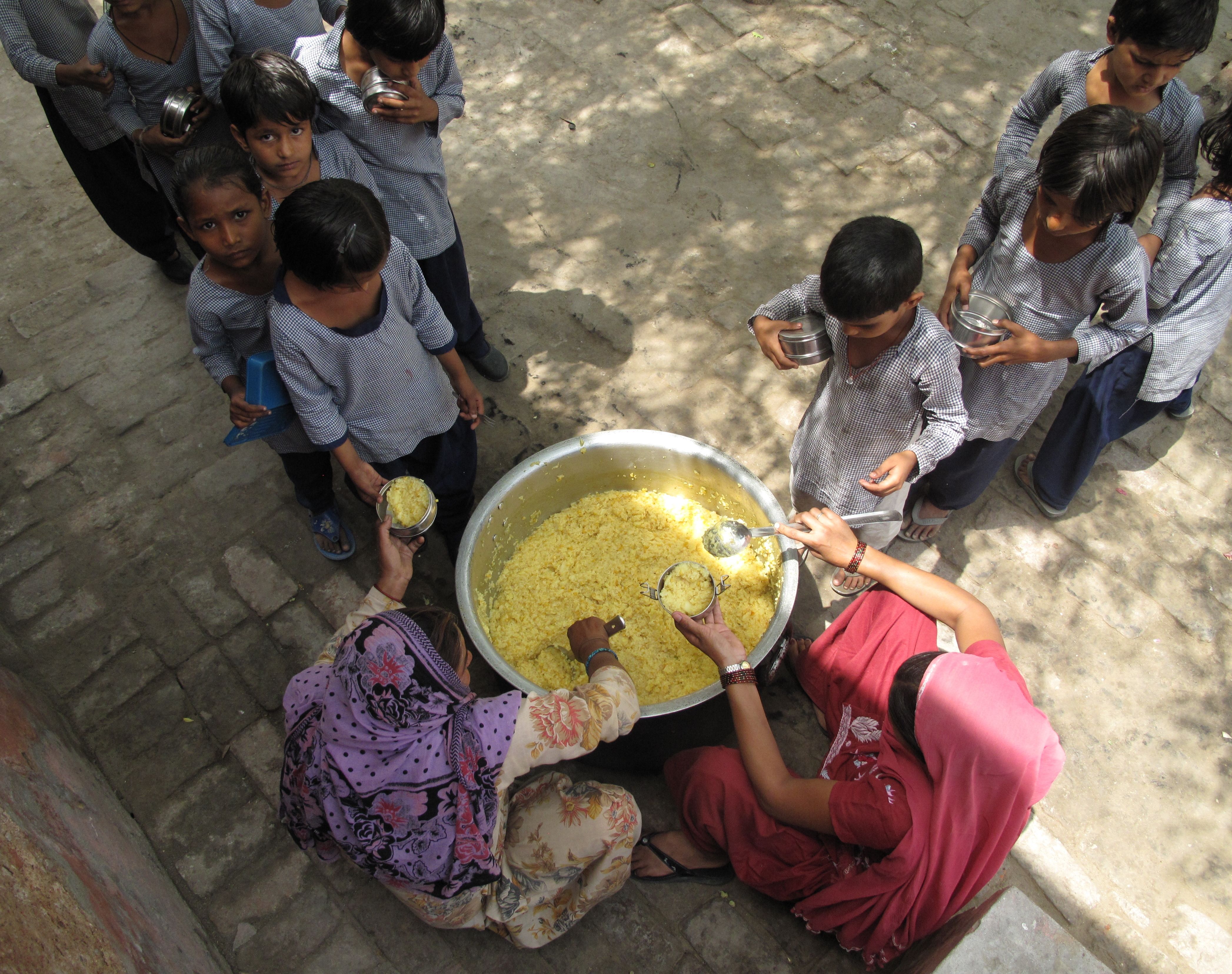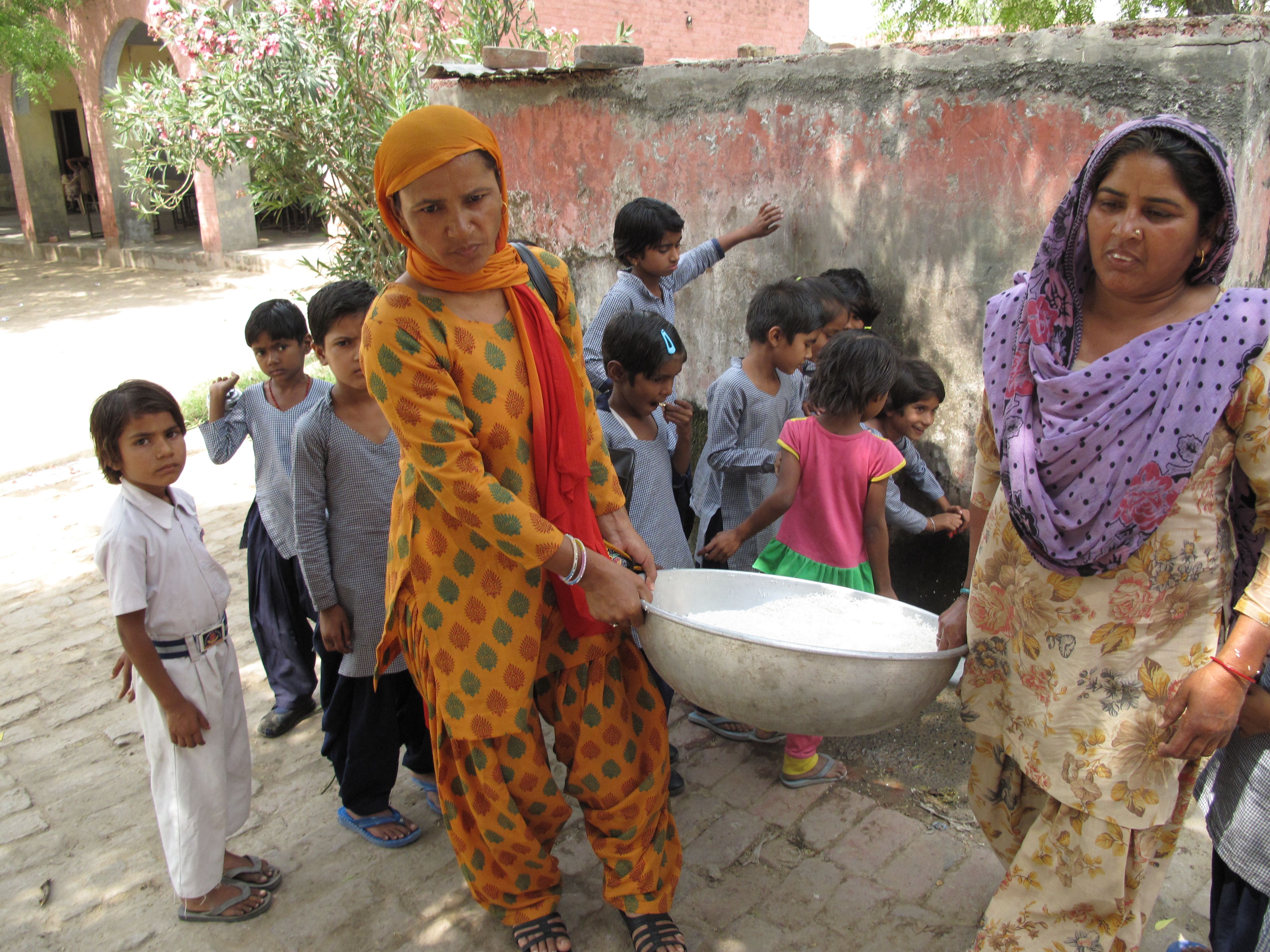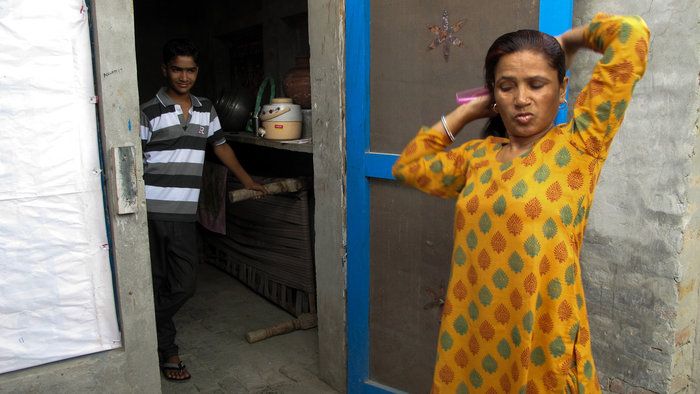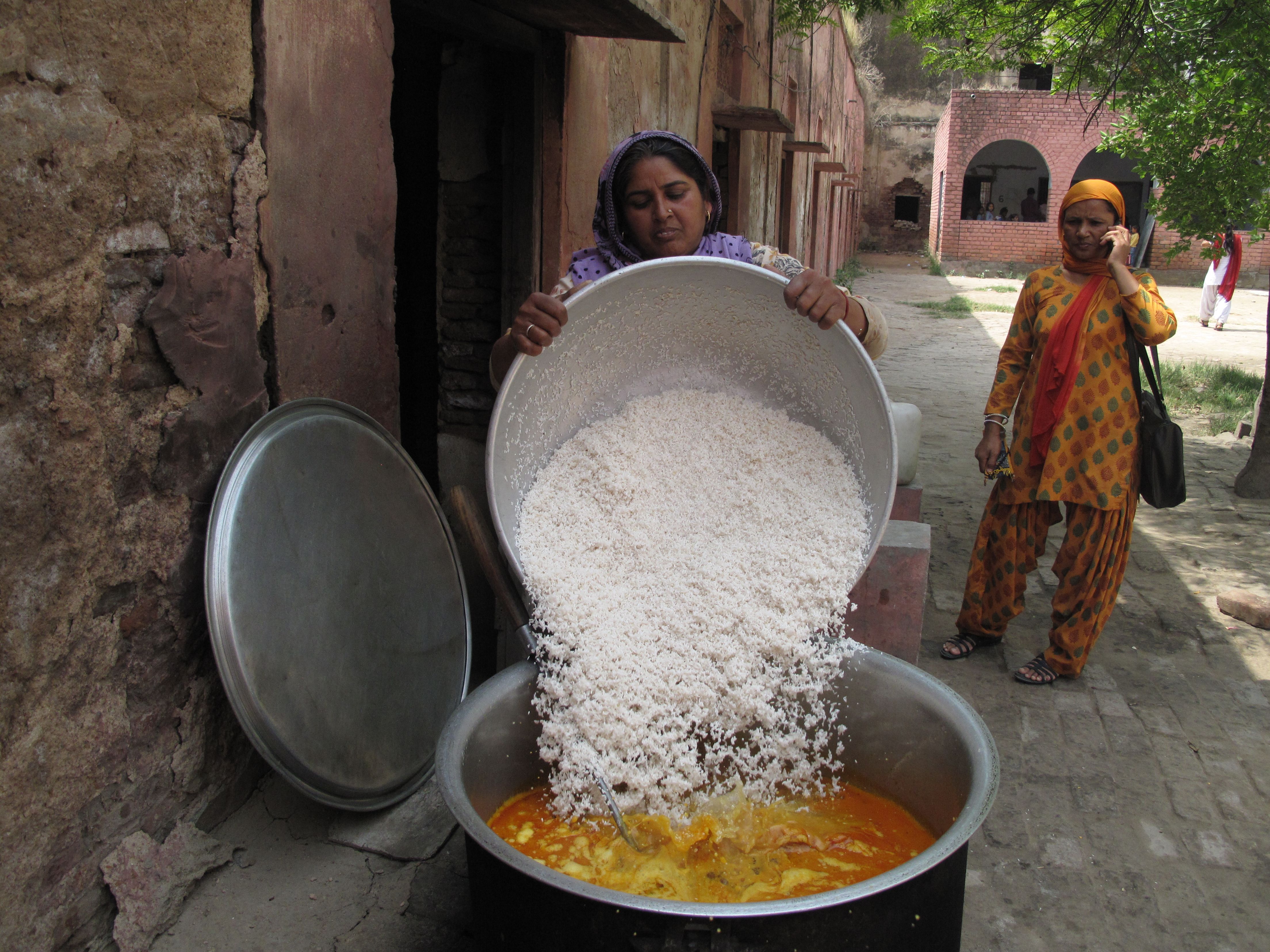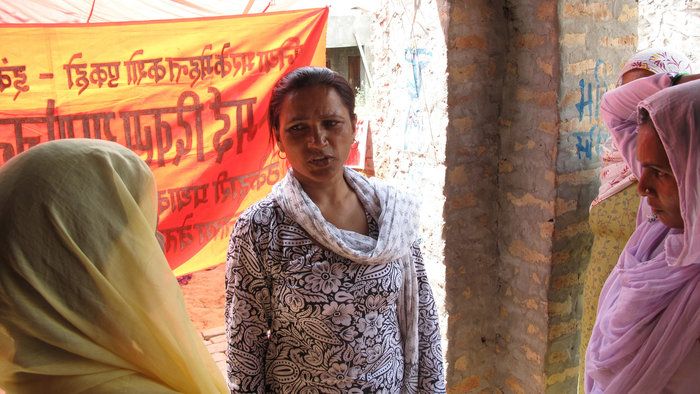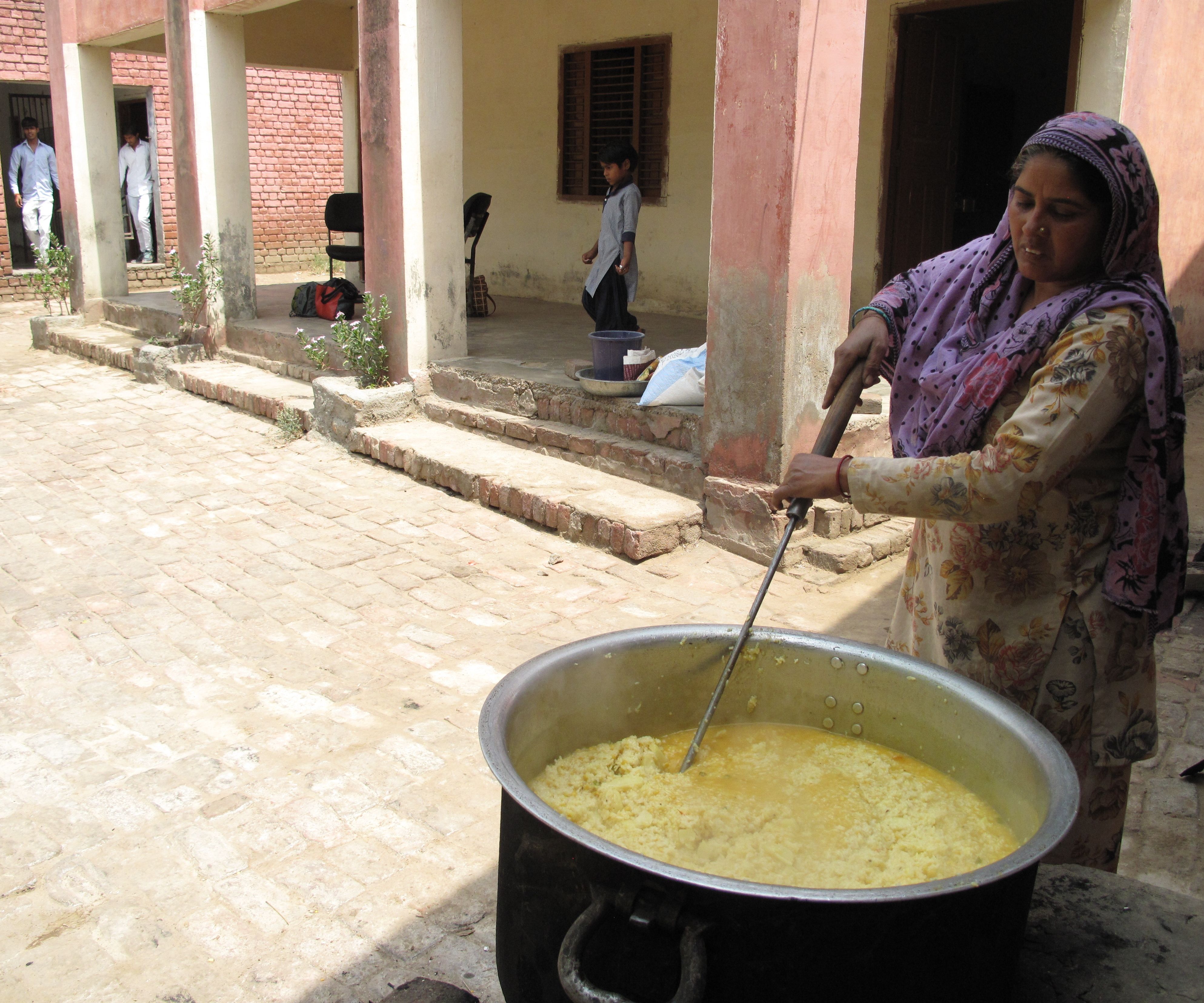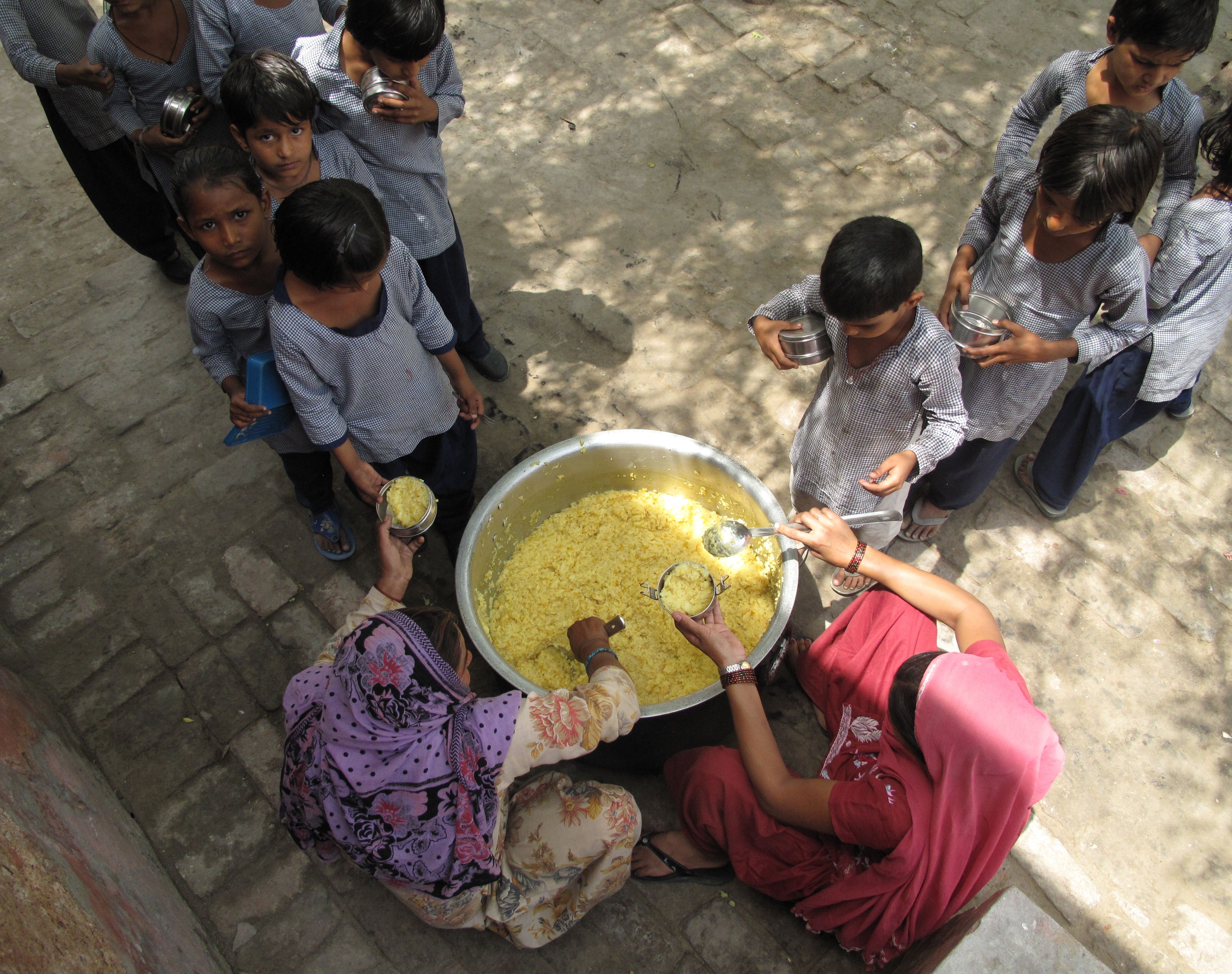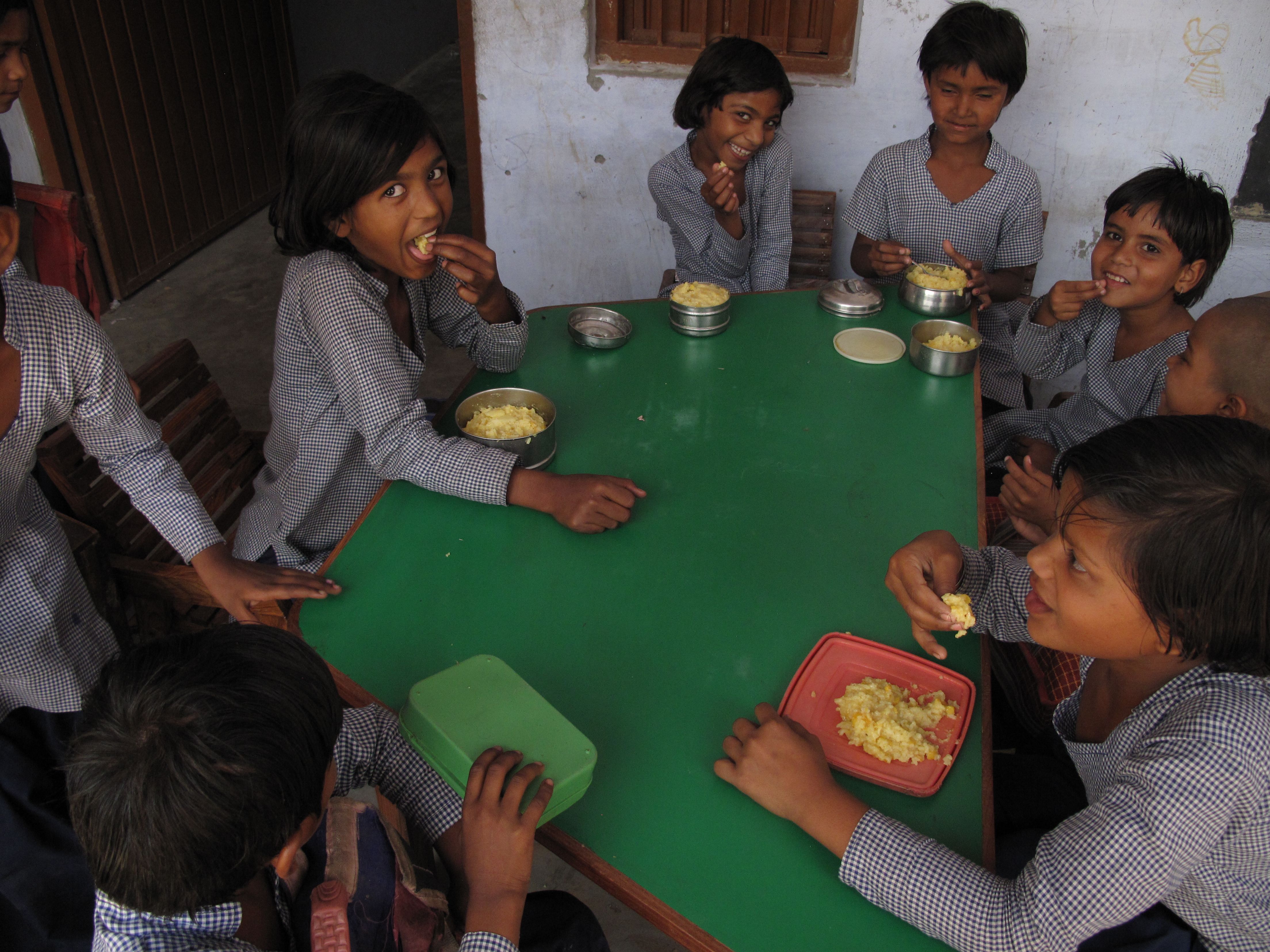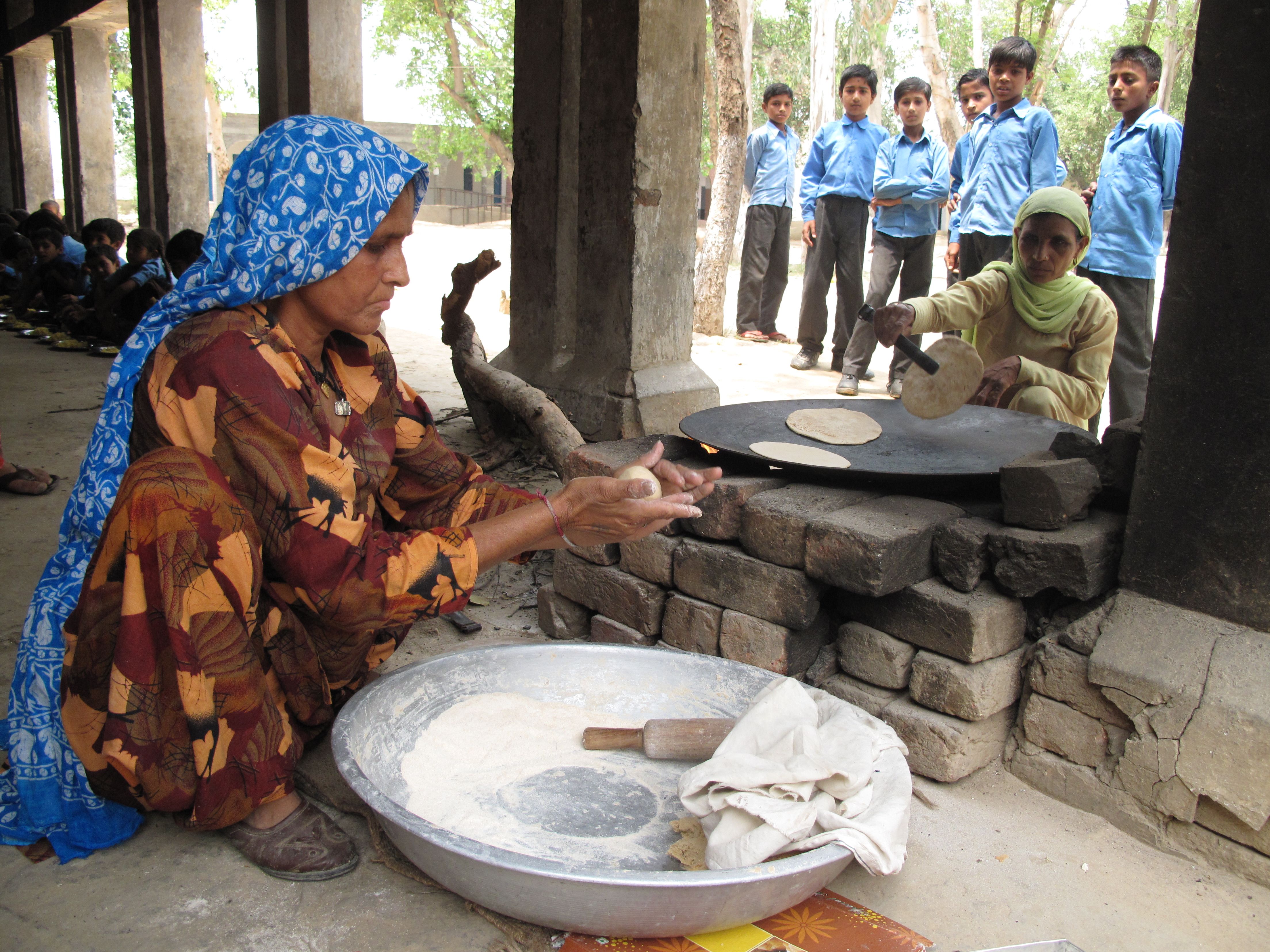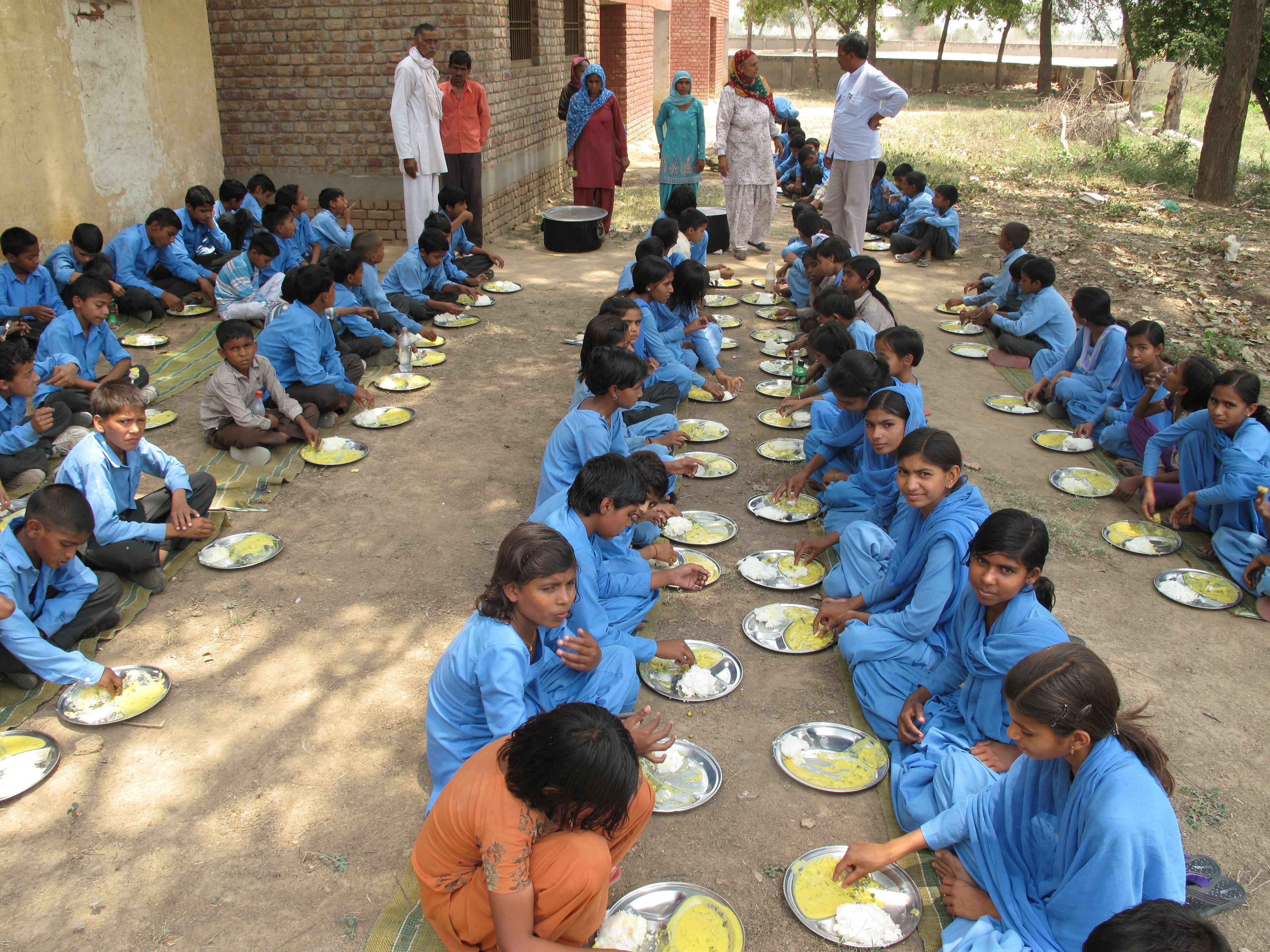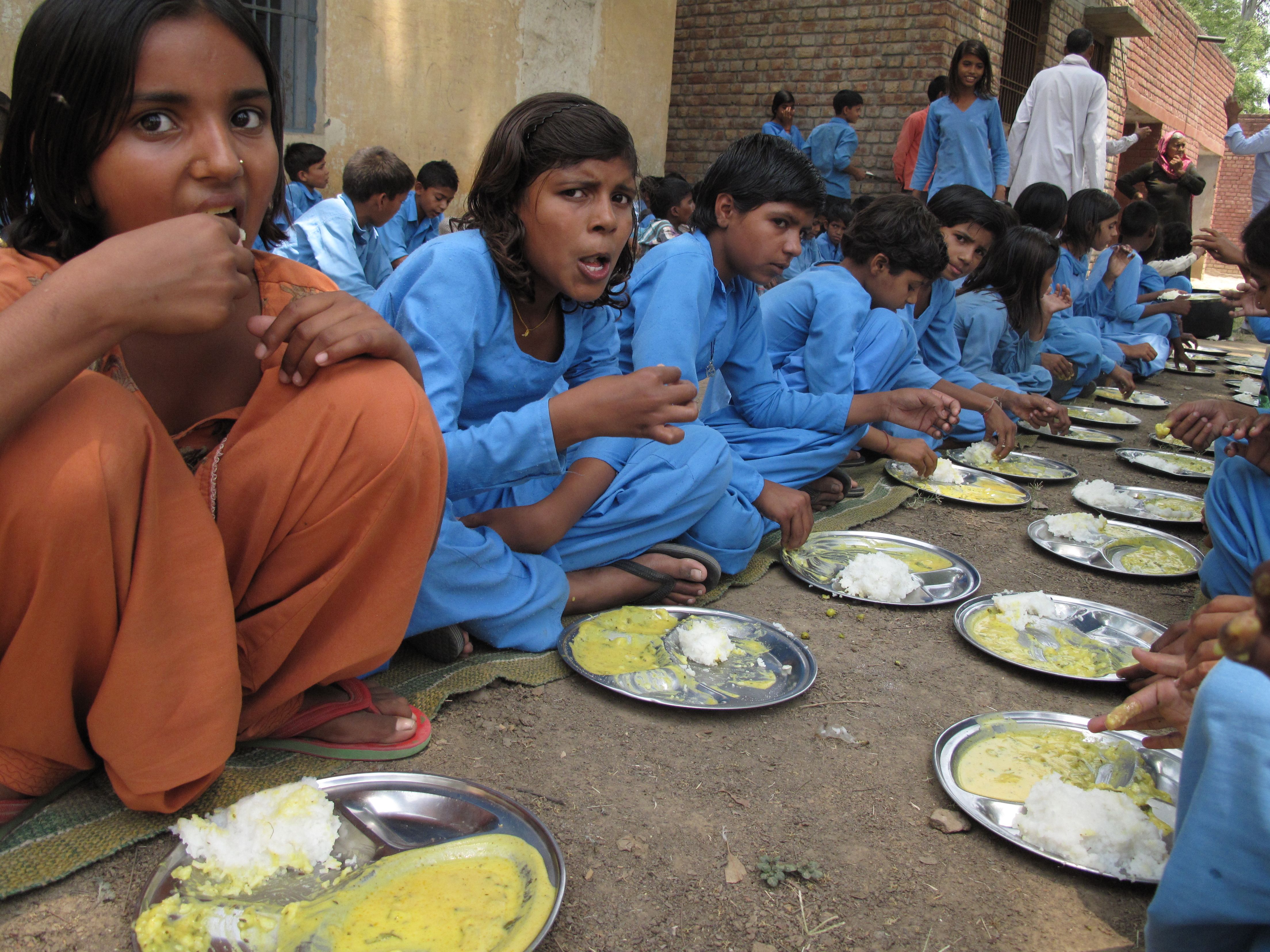This lesson is written as a series of notes for the facilitator. A series of questions on the resources for students is attached.
India's midday meal program is the largest free lunch school program in the world. It feeds 120 million schoolchildren and employs 2 million women.
In a series of articles and radio reports journalist Rhitu Chatterjee discusses the program's impact on nutrition, school attendance, employment opportunities for poor or marginalized women who serve as cooks, and the effect on reducing discrimination by allowing children of different castes to eat together. Both shortcomings and benefits of the program are discussed.
A lively and colorful animation produced by Mathilde Dratwa reinforces key points in the reporting.
Introducing the Lesson:
Share the animation (Resource 1) with your students and discuss (see questions for Resource 1).
Read, Listen, Discuss:
Select 2 or three other resources. Ask students to read or listen to the reports and then answer questions related to each resource.
Optional: Provide students with the additional material listed under Resources.
Wrapping Up and Digging Deeper:
1. Compare and contrast India's mid-day meal program to lunch programs in the United States. How do programs in the U.S. meet health and nutritional needs? What are regional differences in the programs? How are local resources used?
2. What are other countries where school lunch programs are most effective? What makes them successful? What areas need improvement?
